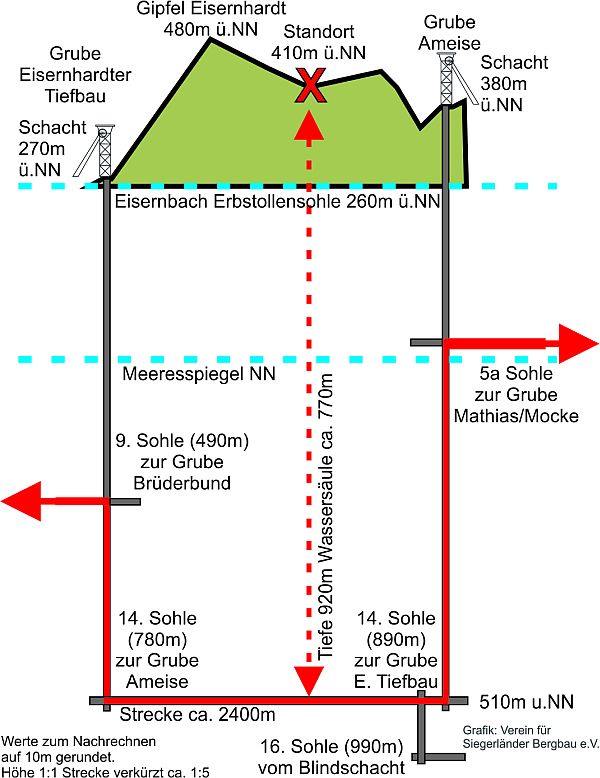Old mining has left its mark on the surface of the hills and hillside of Eisernhardt. Modern mining happened in the valley below the mountains. In 1858/59 a lot of the old smaller mines combined to the mine Eisernhardter Tiefbau (Eisernhardt underground mine). This started in 1864 with sinking a shaft to mine the ore resources below the valley floor (=underground mining). A big problem during the first centuries was the mechanical water pumping, so shaft deep as well as yield increased but slowly. However, after the 1870s it developed to one of the major mines in the mining district. In 1883, it was connected to the Eisern-Siegen railway. In 1911, the ownership passed over to Charlotte Steelworks and in 1926 became part of the group Vereinigte Stahlwerke AG (United Steelworks). From 19926 to 1931, Eisernhardt Tiefbau associated with Bruederbund at 490m depths and the time of united pits started. From 1932 to 1937, a connection with the pit Ameise was made in 780m depth.
This single-tracked transport way connection is 920m below this walking trail. Nowadays, all the underground constructions are flooded. But if we went there, a water column of 770m would apply a pressure of 77 bar. And we would be 510m below sea level. In the 1950steh Erzbergbau Siegerland AG (Ore Mining Siegerland) united with further Siegerland mines and so, among others, the ‚Siegerland subway‘ developed. Underground it connected the mines Mocke (Kaan-Marienborn), Ameise, Tiefbau, Bruederbund, Pfannenberger Einigkeit (Neunkirchen/Salchendorf), Eisenzeche (Eiserfeld) to the shaft of Concordia (Dermbach) Ore mining was shut down at Eisernhardt Tiefbau in 1957 and at the central plant Pfannenberger Einigkeit in 1962 and the mines were closed down.


